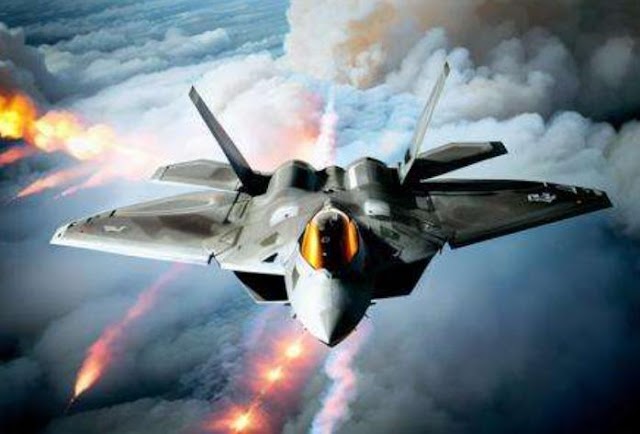F-35: Unveiling the Powerhouse A Triumph in Modern Aviation
In the realm of modern aviation, the Lockheed Martin F-35 Lightning II stands as a testament to cutting-edge technology and unparalleled versatility. As an American family of single-seat, single-engine, all-weather stealth multirole combat aircraft, the F-35 is designed to excel in air superiority, strike missions, electronic warfare, and intelligence, surveillance, and reconnaissance. In this article, we'll delve into the key aspects of this remarkable aircraft, exploring its variants, role, development, and global impact.
 |
| F-35 Lightning II |
Unraveling the F-35 Variants:
The F-35 family boasts three main variants, each tailored for specific operational needs:
1. F-35A (CTOL): The conventional takeoff and landing variant.
2. F-35B (STOVL): The short take-off and vertical-landing variant.
3. F-35C (CV/CATOBAR): The carrier-based variant is designed for catapult launches and arrested landings.
Dominating the Skies - Key Performance Metrics:
Role:
Multirole Fighter
National Origin:
United States
Manufacturer:
Lockheed Martin
First Flight:
- F-35A: 15 December 2006
- F-35B: 16 years ago (as of 11/26/2023)
- F-35C: 28 February 2019
Introduction:
- F-35B: 31 July 2015 (USMC)
- F-35A: 2 August 2016 (USAF)
- F-35C: 28 February 2019 (USN)
Primary Users:
- United States Air Force
- United States Marine Corps
- United States Navy
 |
| F-35 Lightning II |
Produced:
2006–Present
Number Built:
975+ as of October 2023
Developed From:
Lockheed Martin X-35
The Genesis - Development and Funding:
The roots of the F-35 can be traced back to the Lockheed Martin X-35, which outperformed the Boeing X-32 in the 2001 Joint Strike Fighter (JSF) program. While primarily funded by the United States, the program also garnered support from NATO and close U.S. allies, including the United Kingdom, Australia, Canada, Italy, Norway, Denmark, the Netherlands, and Turkey. The program's ambitious scope, however, has not been without its share of challenges.
Challenges and Triumphs:
The F-35 program has faced scrutiny for its unprecedented size, complexity, costs, and delayed deliveries. Concurrent production during development and testing led to expensive design changes and retrofits. Despite these challenges, the F-35 achieved its maiden flight in 2006 and entered service with the U.S. Marine Corps in July 2015, marking a historic moment in aviation.
Global Impact and Future Prospects:
In 2018, the Israeli Air Force utilized the F-35 in combat, showcasing its operational capabilities. The U.S. plans to acquire 2,456 F-35s by 2044, solidifying its position as the backbone of tactical aviation for the U.S. Air Force, Navy, and Marine Corps for decades. Moreover, the F-35 is poised to pivotal role in NATO and U.S.-allied air power until 2070.
Conclusion:
The Lockheed Martin F-35 Lightning II is more than just an aircraft; it's a technological marvel that has redefined the landscape of modern aviation. With its stealth capabilities, multirole functionalities, and global impact, the F-35 continues to soar to new heights, ensuring its place as a cornerstone of air power for the United States and its allies. As we look towards the future, the legacy of the F-35 promises to leave an indelible mark on the history of aviation.









.jpeg)

0 Comments
If you have any doubts. Please let me know. I would be happy for your kind suggestion.